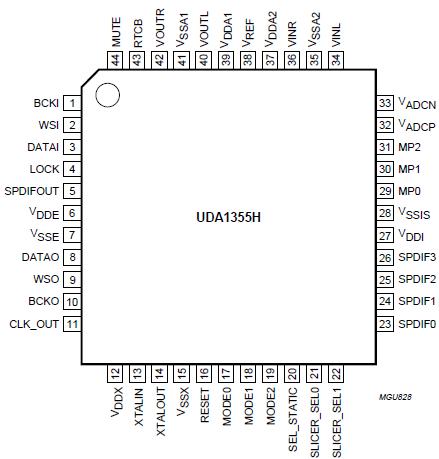UDA1355H: PinoutDescriptionThe UDA1355H is a single-chip IEC 60958 decoder and encoder with integrated stereo digital-to-analog converters and analog-to-digital converters employing bitstream conversion techn...
floor Price/Ceiling Price
- Part Number:
- UDA1355H
- Supply Ability:
- 5000
Price Break
- Qty
- 1~5000
- Unit Price
- Negotiable
- Processing time
- 15 Days
SeekIC Buyer Protection PLUS - newly updated for 2013!
- Escrow Protection.
- Guaranteed refunds.
- Secure payments.
- Learn more >>
Month Sales
268 Transactions
Payment Methods
All payment methods are secure and covered by SeekIC Buyer Protection PLUS.

 UDA1355H Data Sheet
UDA1355H Data Sheet







